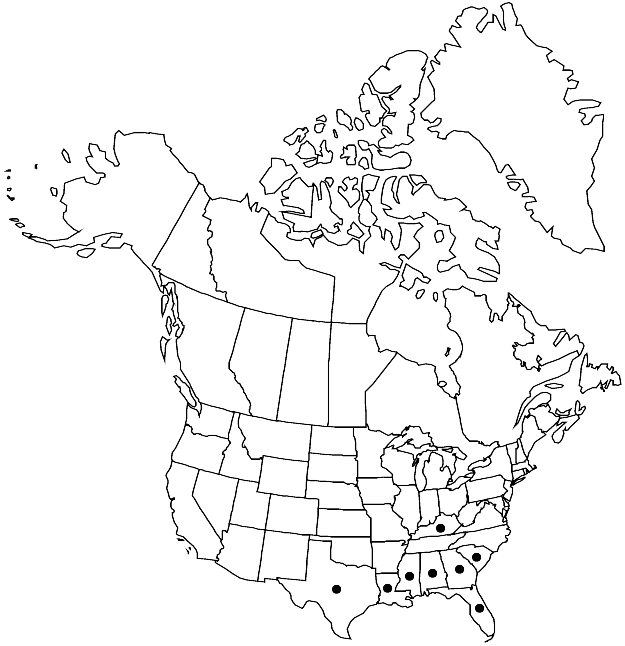Difference between revisions of "Philonotis uncinata"
Bryol. Univ. 2: 22. 1827.
FNA>Volume Importer |
imported>Volume Importer |
||
| (2 intermediate revisions by 2 users not shown) | |||
| Line 56: | Line 56: | ||
|publication year=1827 | |publication year=1827 | ||
|special status= | |special status= | ||
| − | |source xml=https:// | + | |source xml=https://bitbucket.org/aafc-mbb/fna-data-curation/src/2e0870ddd59836b60bcf96646a41e87ea5a5943a/coarse_grained_fna_xml/V28/V28_173.xml |
|genus=Philonotis | |genus=Philonotis | ||
|species=Philonotis uncinata | |species=Philonotis uncinata | ||
Latest revision as of 21:34, 5 November 2020
Plants small, in lax to dense tufts, yellowish. Stems 0.5–1.5(–3) cm, erect to inclined, simple, tomentose proximally. Leaves erect and straight or curved and homomallous when dry, erect-spreading when moist, triangular-lanceolate, 0.7–1.3 mm; margins plane proximally, narrowly revolute distally, bluntly serrulate nearly to base, teeth usually single proximally, paired distally; apex acuminate; costa percurrent to short-excurrent, distal abaxial surface rough; laminal cells quadrate to rectangular, less than 5:1, prorulose at distal ends, prorulae not conspicuous, sometimes obscure, few; basal cells quadrate to rectangular, wider than distal, 10–65 × 8–12 µm; distal cells narrowly oblong, 20–50 × 5–8 µm. Specialized asexual reproduction by brood branches in distal leaf axils. Sexual condition dioicous; perigonia gemmiform. Seta 1.3–3 cm, straight. Capsule 1.5–2 mm. Spores subspheric to reniform, 23–26 µm.
Phenology: Capsules mature Feb–Mar.
Habitat: Rock, soil, open habitats
Elevation: low elevations (0-30 m)
Distribution

Ala., Fla., Ga., Ky., La., Miss., S.C., Tex., Mexico, West Indies, Central America, n, c South America, Pacific Islands.
Discussion
Philonotis uncinata is restricted in the flora area largely to states bordering the Gulf of Mexico. The species is recognized by its diminutive habit, percurrent to short-excurrent costa, doubly toothed leaf margin and laminal cells prorulose at distal ends. Philonotis glaucescens, treated as a synonym here, has been recognized elsewhere as P. uncinata var. glaucescens (Hornschuch) Florschütz. The features by which P. glaucescens is recognized (whether as a variety or as a species) include straight leaves and a percurrent costa; these seem to fall within the variation displayed by P. uncinata, the oldest name available for this group of related forms.
Selected References
None.